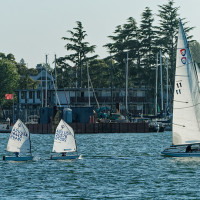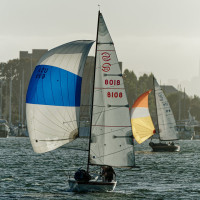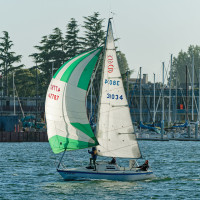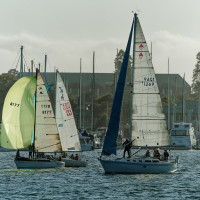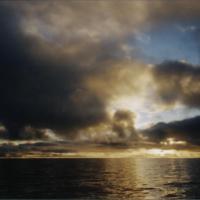
Hurricane Beryl Barrels Through the Caribbean
The still-churning Hurricane Beryl is now crossing the Yucatán Peninsula and looks set to die out as it heads north, entering the US with more damaging winds and rain in southern Texas. It grew from a tropical storm into a major hurricane in less than 48 hours and is the earliest Category 5 on record in any hurricane season. Hurricane Emily was previously the earliest Category 5 on record, happening on July 16 of the 2005 Atlantic hurricane season.

As we’ve seen with past hurricanes in the Caribbean, there is an immense amount of damage ashore and in all harbors of the Grenadines and Barbados. There will be a multiyear rebuilding effort, though challenged with the knowledge that we are still in the first month of what is expected to be a busy hurricane season. There is great need throughout the region. Noonsite has posted a story on how you may be able to help.

Anyone who has cruised or chartered in these magical islands understands the beauty and vulnerability of these island communities. It will be a massive challenge in the weeks, months and years ahead to rebuild and put their lives back together.

Hurricane Beryl spared Barbados a direct hit, but caused some damage to boats and land. Typically boats move south to Grenada and Trinidad to avoid the usual hurricane path. Though this is not unheard of, Hurricane Beryl was more southerly than most hurricanes while also being much earlier and larger than most.
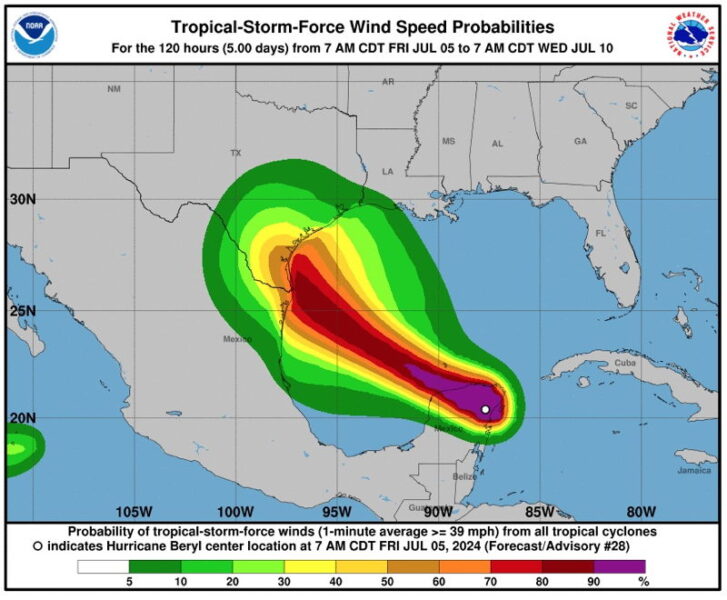
There is also a list of opportunities to help the region on a page set up by Doyle Cruising Guides. As insurance companies have been hit hard over the last decade from hurricanes in the Caribbean to the 2023 Hurricane Norma in La Paz and extremely devastating Hurricane Otis in Acapulco, the impact of these storms will be felt far beyond the shores of the Grenadines. La Paz and Acapulco are still cleaning up from their hurricanes, and the Grenadines’ recovery is just beginning.
Predictions this year are for a very active hurricane season, which, with Beryl, has started early and powerfully. Sailors with boats in the region should do their best to prepare, and those who can help can connect through the guidance of Noonsite or Doyle Cruising Guides or relief organzations of your choice.
SailGP on Its Way from New York to San Francisco
Two weeks ago SailGP finished its regular New York season. The road show will be in San Francisco on July 13–14 for the season Grand Final. Craig Ligibel wrote a recap of New York and a preview for San Francisco.

With $2 million on the line in the beefed-up winner-take-all Mubadala SailGP Final to be staged in San Francisco the weekend of July 13–14, team drivers are focused on who will … and who will not … make it to the season-ending three-team match race that will decide the winner of the purse and the season’s champion.
A couple of things are for sure:
First, barring a disaster, the New Zealand team “The Black Foils” already have their ticket punched for the three-boat match race.
Three other teams are within striking distance of a top-three finish, including three-time SailGP champs the Australians hovering in second place with only a few-point lead over rising stars Spain and France. Canada, Denmark and Great Britain are lurking close behind.

With five fleet races to be staged before the winner-take-all Final, anything can happen, as points are awarded for fleet-race performance that could catapult any one of the contending teams into the race for the $2 million prize.
As Aussie Flying Roo helmsman Tom Slingsby told me right before last month’s race in New York City, “We’ve had a string of bad luck recently. Highs and lows. Hopefully we can finish strong here (they did) … and ride that wave of good luck all the way to San Fran.”
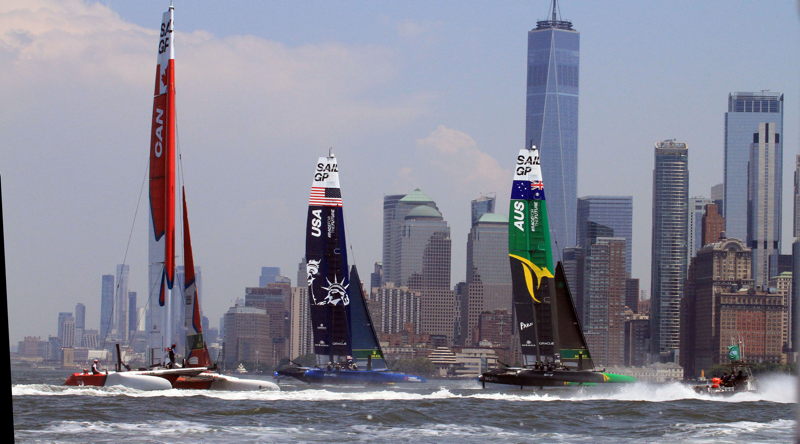
Another thing just as certain is that the American SailGP boat has no chance of finishing anywhere other than in the bottom third of the pack, thanks to a number of last- and next-to-last-place finishes in the previous two events.
Team USA helmsman, 35-year-old Taylor Canfield, summarized his team’s New York City performance like this: “It’s not what we were expecting when we showed up this morning. Light, fluky winds made it tough going out there. The team had ‘moments of brilliance’ during the opening day but still has a lot of work to do.”
On Day 1, the team finished dead last in both fleet races (the third was abandoned due to light winds) and has now had five consecutive 10th-place finishes across the last five fleet races spanning New York and Bermuda.
“We are really looking forward to staying in the US for the next one,” Canfield said. “Being here in front of the whole crowd and all the support we’re getting for San Francisco, it’s incredible. So we ask the fans to bear with us a little longer! It will come!”

When asked what it will take for the US team to move up in the rankings next year, an optimistic Canfield indicated that more time on the water and better consistency as a team will “put us in a better place.”

Might changes to the team include the addition of some non-US sailors? Canfield was quick to point out, “ We are an American team. We have the talent to win without looking outside of the United States.”
The New Zealand team is the odds-on favorite to win the season-ending crown … and monetary prize. They are coming off a fifth victory of the season as they ran away with the New York title in beating Canada and Great Britain by more than 30 seconds.
After the New York City event, Black Foils boat driver Peter Burling said, “I knew we had a long road ahead of us to be top of the leaderboard going into the Grand Final. It’s been a tough season, but to just charge through that and get these wins on the board is something we’re super-proud of.”

The Australians barely nudged out the Kiwis in last year’s Grand Final.
“We remember that loss,” determined Kiwi boat driver Peter Burling said. “But with SailGP anything can happen.”
There are a variety of ticketing options available for spectators in San Francisco, including Waterfront Reserve and Waterfront Premium seating. There is also a Bring Your Own Boat option and the opportunity to watch the racing from dedicated observation boats located around the race course. You can book tickets here.
Be First With Ronstan Orbit Winch
Be first to make adjustments during a race: trim the sails when there’s drops in pressure, after an ease or duck, or adjust for waves. Small, frequent tweaks throughout the race make a big difference. With Ronstan Orbit Winches™, lines can be eased without removing the handle or the line from the self-tailing jaws, a unique advantage provided by the patented QuickTrim™ self-tailer. Be first.
Sailagram: A Snapshot of June Sailing
Welcome to this month’s Sailagram. June was quite a racey month, with Slackwater SF sending in photos from June’s Oakland YC Sweet 16, Offshore Half Moon Bay, and Woodies Invitational races.
Add your photos to next month’s gallery here: Add me to Sailagram!
A Fun Night at Sea, Versus a Nightmare at Sea
In this month’s World of Chartering we hear from Tom Luneau on chartering in Tampa Bay, FL, and how marine safety is what makes a fun night at sea, versus a nightmare at sea.
I am writing this to help educate sailors who are planning to charter a vessel. Despite being an experienced sailor and captain, I learned many lessons from my experience chartering a 50-ft Beneteau named Apollo in Tampa Bay, Florida. I’m going to tell you what I did right and what I did wrong, to hopefully help you navigate around the “what I did wrong” part on your own adventures.
I have been sailing for 30-plus years. I have owned or co-owned an 18-ft Hunter starter sailboat, a 27-ft Catalina, a 33-ft Morgan, a 37-ft Beneteau, and now a 44-ft Jeanneau. We logged over 5,000 miles on our last boat, Todo Bueno,* including sailing from California to the tip of Baja and then north into the Sea of Cortez. I have also chartered vessels in Miami, Tampa Bay, Australia, Italy, and Mexico. And yet, no matter how much experience I thought I had, I really was unprepared for what happened during the charter in Florida.

There are some things all charter trips have in common.
Lesson 1: The boat you saw on the website may not be the boat you are going to sail on your trip.
“Why is that?” you ask. There are many possibilities. In Australia, Tropical Storm Debbie sank the vessel we were supposed to rent, one week before we got there. On our arrival in Tampa Bay, we found the Catalina 445 we’d rented had no lifelines and was not seaworthy. Likewise, the 50-ft catamaran we chartered in Sardinia was brand new and the electronics had not been installed, so, also not seaworthy.
To prepare for our bareboat charter in Tampa Bay, I read and researched quite a bit. The plan was for me to be the captain. We were scheduled for a morning sail across Tampa Bay south into the Gulf of Mexico, and then, after a short, three-hour sail south in the Gulf of Mexico, to tuck back into very relaxing and protected keys and marinas. The destinations were aptly named Siesta Key and Longboat Key; the nearby marinas were Safe Harbor and Siesta Key Marina. Slips were available if needed. The plan was to snorkel, swim, and dine at restaurants around the marinas.
We (my wife Lynn and I) were joined by high school friends Bobby and Lisa, who are not sailors, but have been with us on other charters. The deal we have is they allow Lynn and me to do the sailing and they do the cooking. And that’s a good deal, since let’s just say I’m not submitting any articles to cooking magazines.
The vessel we rented was a 2020 Catalina 445. But, as I mentioned before, it didn’t have lifelines. And I’m not going to charter a boat without those. The rental company manager said the lifelines were supposed to have been repaired by the week prior, but we both knew they were not going to magically appear the next day. So the manager asked me, “Tom, can you handle a 50-ft Beneteau?” Despite being in over my head, my instant answer was, “Yes.” Sure, I had sailed and crewed on bigger sailboats, but never operated one as captain. The huge mast and mainsail were, in my mind, too much for me and Lynn to handle. We had sailed hundreds, maybe thousands of miles together, but Apollo was a big boat with a towering mast and electric winches. I had never used electric winches before. So my plan was to motor, and use the jib as the only sail.
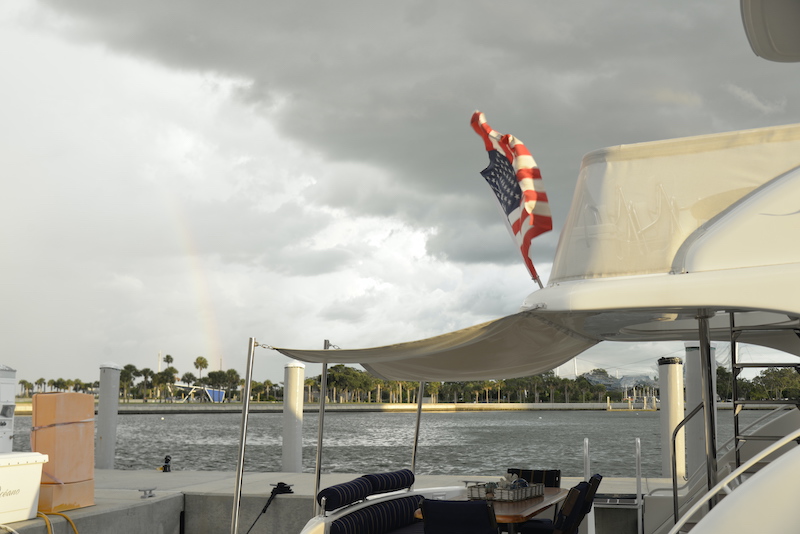
*In the July issue, we referred to Tom and Lyn’s 44-ft Jeanneau as Good Times! Todo Bueno is the boat’s correct name. To read more, please go to this month’s World of Charter.




